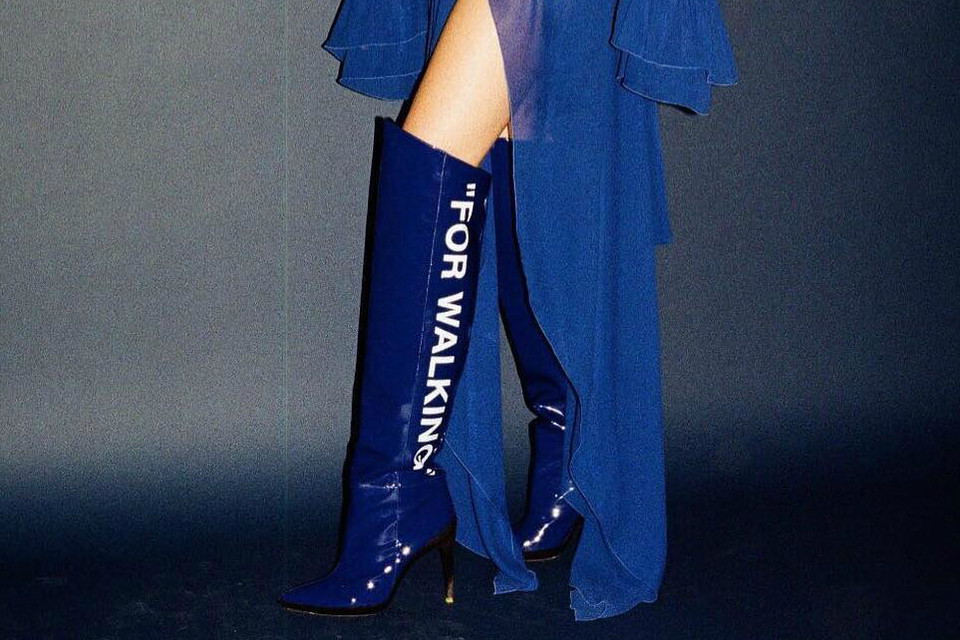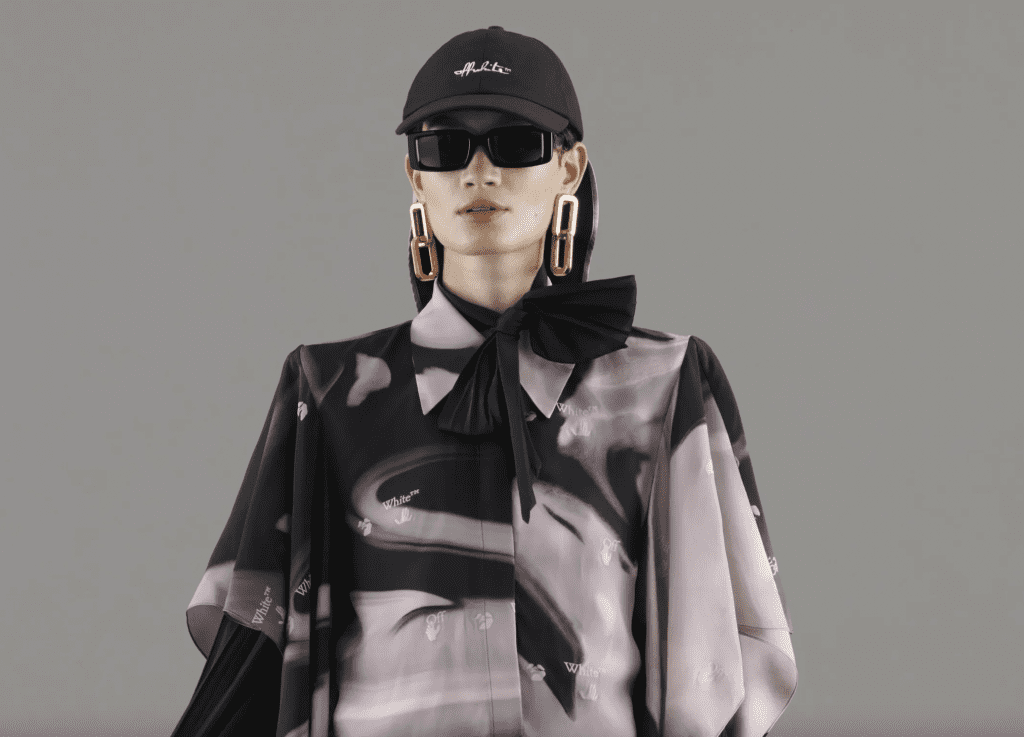The U.S. Patent and Trademark Office is not buying Off-White’s claim that “For Walking” operates as a trademark when used on footwear. On the heels of Virgil Abloh’s brand responding to push back from the USPTO and arguing that the “For Walking” mark is “elevated beyond being descriptive [of the goods upon which it appears] due to the unique commercial impression created by [Off-White’s] distinct use of quotation marks,” which Off-White claims is different from “mere use of the word or phrase without the quotation marks,” the trademark office has issued a final office action, refusing to register the quotation flanked trademark.
In a third and final office action dated August 2, examining attorney for the USPTO Shaunia Carlyle reiterated her earlier shut down of the mark, stating that registration of the applied-for mark is again refused on the basis of descriptiveness, meaning that “the applied-for mark merely describes a feature and characteristic of the applicant’s goods” – or in other words, “describes an ingredient, quality, characteristic, function, feature, purpose, or use of an applicant’s goods and/or services.”
Reflecting on Off-White’s July 1 response to a previous Office Action, in which counsel for the brand argued that its “use of the quotation marks changes the commercial impression and therefore, creates a non-descriptive mark,” Carlyle pushes back again. “Adding punctuation marks to a descriptive term will not ordinarily change the term into a non-descriptive one,” she asserted, noting that “here, with and without the quotation marks the mark implies a feature of the goods – desirable and made FOR WALKING.”
The examining attorney also shot down Off-White’s previous argument that its mark acts as a “double entendre” due to the inclusion of the quotation marks, as it has a double meaning. As for what the alternative meaning is, counsel for Off-White claims that the word “walking,” as defined by the Oxford English Dictionary means to “abandon or suddenly withdraw from a job, commitment, or situation.” With that in mind, Off-White asserts that its mark “may suggest that the products are to give the wearer the strength to demonstrate their conviction by walking out – an altogether different meaning,” and that the double entendre at play “would be readily apparent to prospective purchasers.”

The examining attorney did not buy that argument (and frankly, I am not sure I do either), stating that, among other things, in order for a mark to be a double entendre, “the multiple meanings … must be well-recognized by the public and readily apparent from the mark itself in the context of the applied-for goods and/or services.” If the alternative meaning of the mark “is only apparent to purchasers ‘after they view the mark in the context of the applicant’s trade dress, advertising materials or other matter separate from the mark itself,’” Carlyle states that “the mark is not a double entendre.”
Beyond that, Carlyle pushes back against Off-White’s argument that the “For Walking” mark should proceed in the registration process because one of its other marks – “Product Bag” for use on clothing, including tops and bottoms – was previously given the green-light, albeit after a fair amount of pushback of its own.
Essentially saying “not so fast,” Carlyle notes an important distinction between the “For Walking” and “Product Bag” marks, namely that the latter was initially refused “as not functioning as a mark,” while the “For Walking” mark is facing pushback on a different front. “Here, the issue at hand is one of descriptiveness.”
And finally, Carlyle is not convinced by Off-White’s claim that “the quotation marks are iconic and distinctive to [Off-White] and create a unique commercial impression.” Arguing against Off-White’s position, Carlyle points to a number of third-party trademarks registrations for clothing that use quotation marks, such as a stylized mark that consists of the word “Float,” which an entity called Float, LLC filed an application for registration for in 2015 for use on clothing and footwear. The Alabama-based company was issued a registration for its mark – quotation marks included – in March 2017.
The “Float” mark and others are evidence, according to Carlyle “that it is not unusual for consumers to come across items of clothing that use quotation marks as a part of the source indicator.”
It may be relatively easy to side with Carlyle on Off-White’s arguably convoluted double entendre claim, but it is harder to follow her on this front. In particular, while other companies may use quotation marks in their trademarks and while consumers may, as a result, have become somewhat accustomed to seeing them used in a source-signifying capacity, it is difficult to deny – in light of Off-White’s many high-profile fans, widespread unsolicited media attention, unending number of collaborations, etc. – that if consumers are likely to conjure up the image of a single brand upon seeing quotation marks used in a specific way on certain types of garments and accessories, Off-White is most likely that brand.
Ultimately, Carlyle is not persuaded and states that the “applied-for mark has been refused registration on the Principal Register,” noting that Off-White “may respond to the refusal by submitting evidence and arguments in support of registration and/or by amending the application to seek registration on the Supplemental Register.” Chances are, Off-White will likely make one last push for registration in the Principal Register, but based on the developments to date, the mark will end up on the Supplemental Register, which provides protection for non-distinctive marks that may be capable of acquiring distinctiveness.











